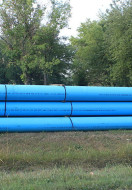1960's - 1970's
Knowing the difference between Aluminum Branch Wiring and Copper Clad or Copper Wiring could help you protect your home from fire. Building Specs home inspectors are trained to locate and inspect aluminum wiring in your home. Aluminum branch wiring was used during the 1960’s and 1970’s for the wiring of receptacles, switches and devices throughout many homes.
This single strand branch aluminum wiring has been implicated in a number of house fires. The actual cause of these fires was not the aluminum wire itself, but was the result of improper connections. Aluminum does not conduct electricity as efficiently as copper and creates more resistance and heat. The wire also expands and contracts more than copper thus there is a tendency for the connections to become loose at the devices and junction boxes. Oxidation will build up between the loose connections, causing an increase in the amount of heat generated, which then poses a potential fire hazard.
Many individuals believe that the aluminum wiring should be removed and replaced with copper. This is not always necessary, and there are approved or recognized methods for making the system safe. If single strand aluminum wire is present (#12, #10 General Purpose Branch Wiring) it is important to install or verify proper connections of all devices and terminals throughout the house. Copper wire ends, known as ‘pigtails’, can be installed at all terminals. Standard wire nuts are not approved for pig tailing, and according to the Consumer Product Safety Commission, may pose an even greater fire hazard and should be replaced.
Approved methods include:
- UL Listed purple wire connectors with copper pigtails
- CO/ALR Connectors or Devices
- Crimped Pigtails (i.e. AMP Copalum connector)
As a Home Inspector, do not open any junction boxes or devices to verify proper connections, you become liable! All connections throughout the house must be verified by an electrician.
Multi-stranded appliance wire or entrance cable is not included as a potential source of problems. It is still used and accepted. Look for antioxidant paste at panel connections for these wires and cables.
Copper Clad Aluminum
Copper Clad Aluminum is easily mistaken for copper. It does not have the same problem with oxidation build up as aluminum. It is typically a #12 wire and still needs proper devices with the larger screw heads or approved pig tailing methods. To identify Copper Clad Aluminum, look for a silver color at the ends of the wires where they are connected to the grounding bar. Copper Clad Aluminum can also be identified in the attic or crawlspace, or other locations where the wiring is visible, by looking for the identification on the wire sheathing, i.e. CU Clad AL.







